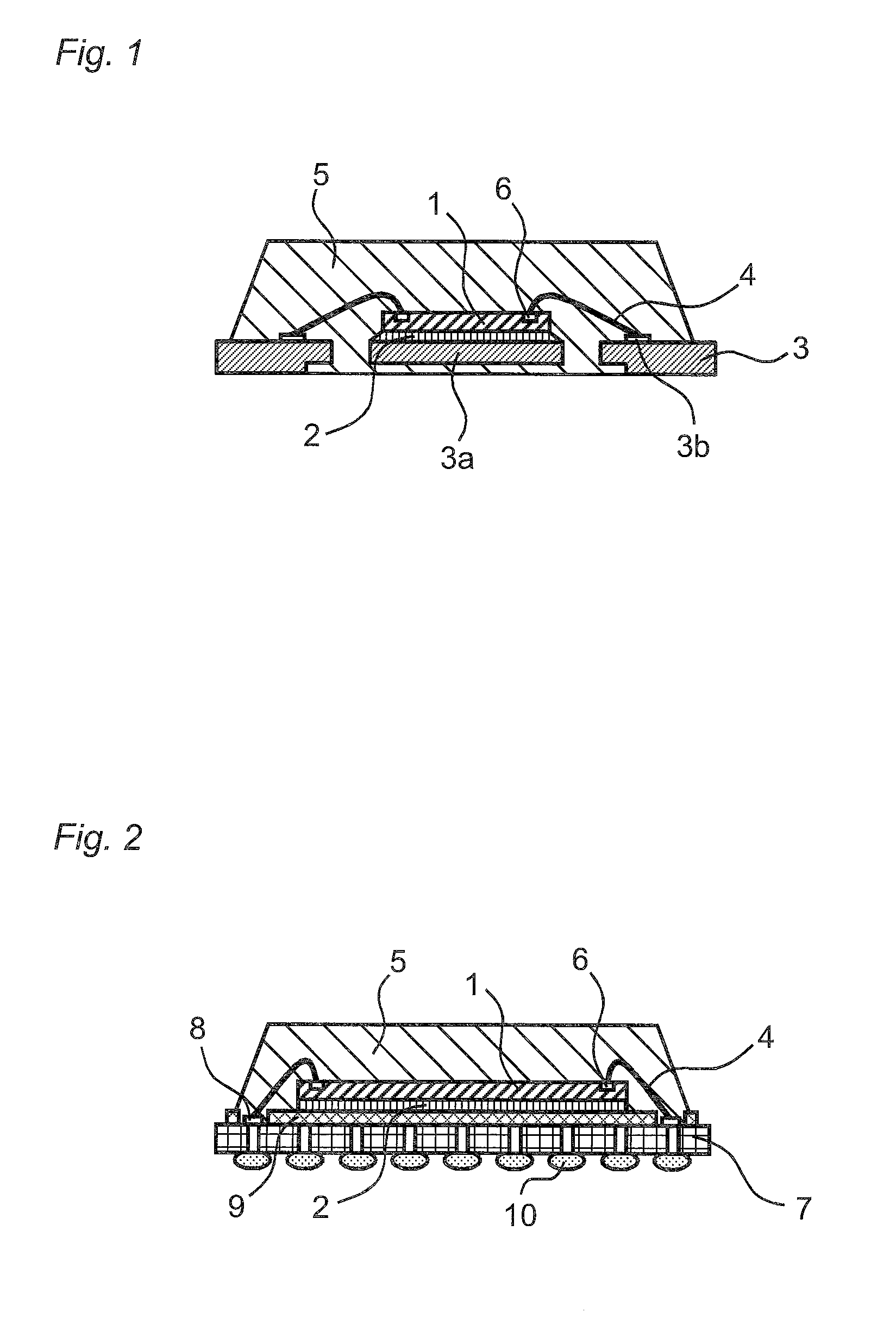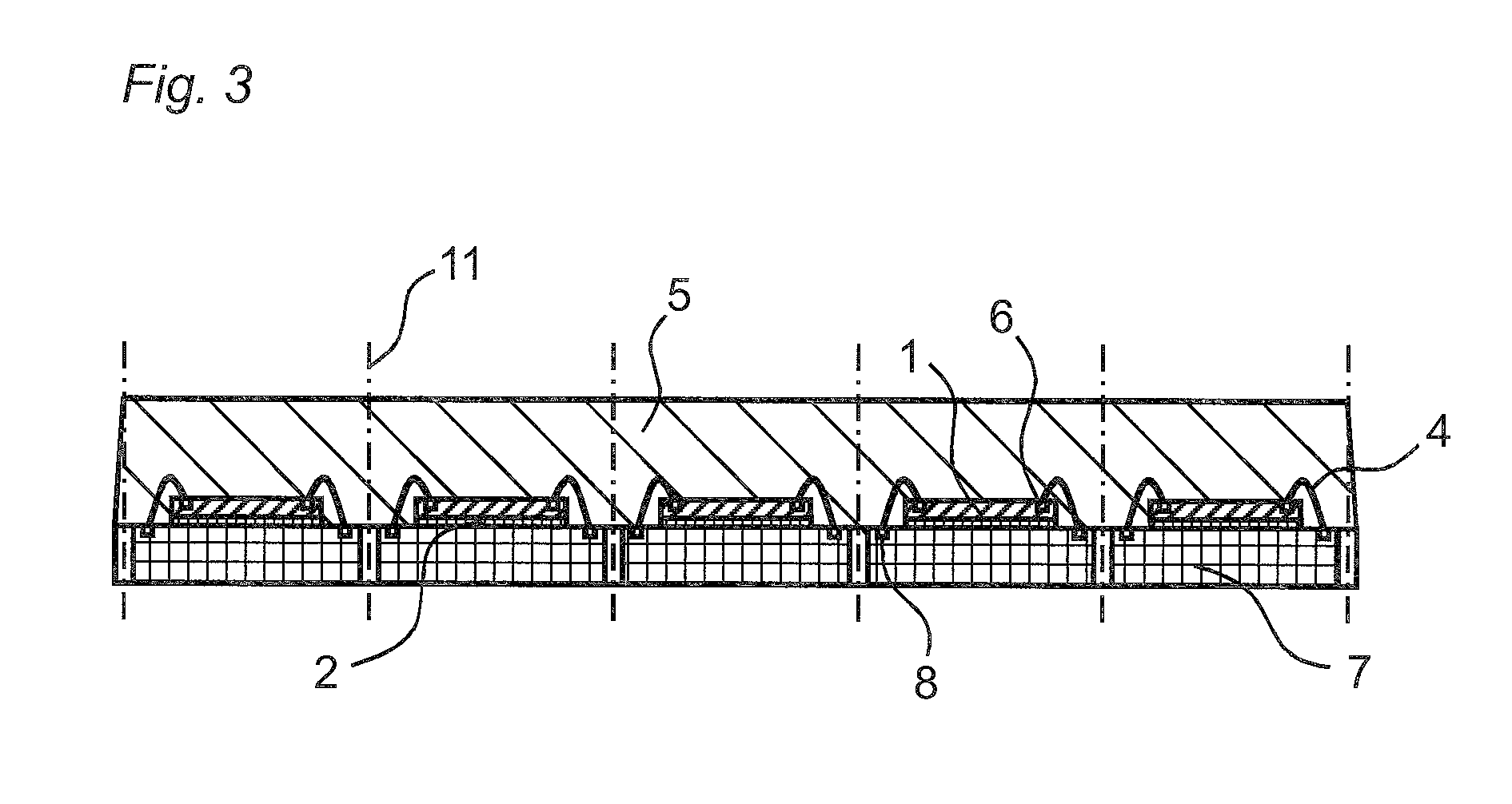Semiconductor device
a technology of semiconductor devices and semiconductors, applied in semiconductor devices, semiconductor/solid-state device details, electrical devices, etc., can solve the problems of insufficient high-temperature storage life of semiconductor devices using such bonding wires made of metals other than gold, and high cost of conventional gold wire connection, so as to achieve excellent high-temperature storage life, migration resistance, and moisture resistance reliability. good balan
- Summary
- Abstract
- Description
- Claims
- Application Information
AI Technical Summary
Benefits of technology
Problems solved by technology
Method used
Image
Examples
examples
[0190]Hereinafter, the present invention will be more concretely described based on the examples and comparative examples. However, the present invention is not limited to the following Examples.
[0191]First, the first semiconductor device of the present invention will be described based on Examples A1 to A30 and Comparative Examples A1 to A10. Components of the epoxy resin compositions used herein are described below.
[0192]
[0193]E-1: Biphenyl type epoxy resin (epoxy resin represented by the formula (3) in which R11's in the 3-position and 5-position are each a methyl group and R11's in the 2-position and 6-position are each a hydrogen atom, “YX-4000H” available from Japan Epoxy Resins Co., Ltd., melting point 105° C., epoxy equivalent 190, chlorine ion content 5.0 ppm)
[0194]E-2: Bisphenol A type epoxy resin (epoxy resin represented by the formula (4) in which R12 is a hydrogen atom and R13 is a methyl group, “YL-6810” available from Japan Epoxy Resins Co., Ltd., melting point 45° C....
example a1
[0224]The epoxy resin E-3 (8 parts by mass), the curing agent H-3 (6 parts by mass), the fused spherical silica 2 (85 parts by mass) as a filler, the compound 1 containing a sulfur atom (0.05 parts by mass), triphenylphosphine (0.3 parts by mass) as a curing accelerator, epoxysilane (0.2 parts by mass) as a coupling agent, carbon black (0.25 parts by mass) as a coloring agent, and carnauba wax (0.2 parts by mass) as a mold release agent were mixed at ordinary temperature using a mixer and then roll-milled at 70 to 100° C. After cooling, the resultant was pulverized to give an epoxy resin composition for an encapsulating member.
examples a2
to A30
[0225]Epoxy resin compositions for encapsulating members were prepared in the same manner as in Example A 1, except that the formulations were changed to those shown in Tables 1 to 6.
PUM
 Login to View More
Login to View More Abstract
Description
Claims
Application Information
 Login to View More
Login to View More - R&D
- Intellectual Property
- Life Sciences
- Materials
- Tech Scout
- Unparalleled Data Quality
- Higher Quality Content
- 60% Fewer Hallucinations
Browse by: Latest US Patents, China's latest patents, Technical Efficacy Thesaurus, Application Domain, Technology Topic, Popular Technical Reports.
© 2025 PatSnap. All rights reserved.Legal|Privacy policy|Modern Slavery Act Transparency Statement|Sitemap|About US| Contact US: help@patsnap.com



